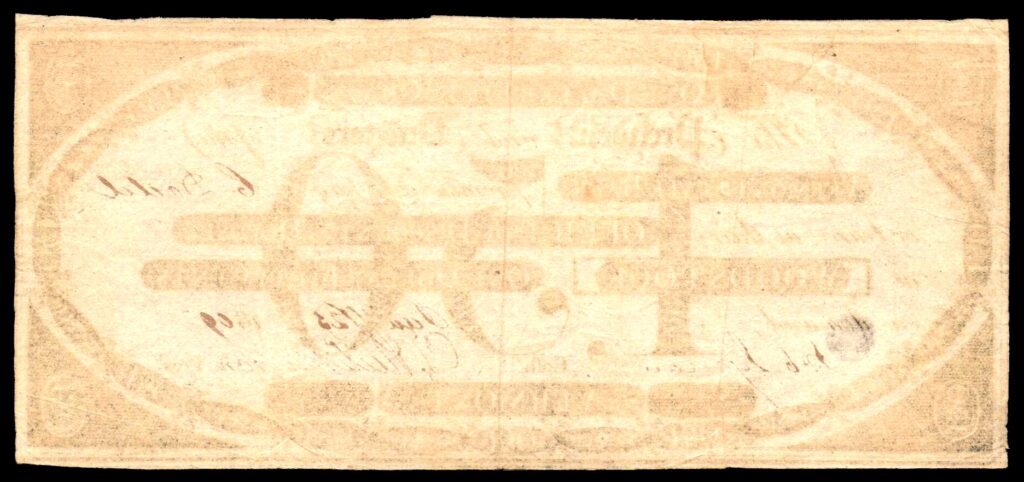Vermont 1,25 Dollars 1807 and 1,50 Dollars 1809
Vermont State Bank
Described as “The Prettiest Small Town in America” by Ladies Home Journal magazine, Woodstock, Vermont is sure to show those who visit the classic Vermont that exists in our minds and on film. In 1768 James Sanderson and his family settled the town, and for a while theirs was the only family in the immediate area. Then, in 1776, a gristmill was erected by Major Joab Hoisington, who shortly thereafter also built a sawmill in the town. Once the Revolutionary War had come to an end, the town prospered nicely. Mills were located near the Ottauquechee River, and blacksmith shops, woolen factories and even a gunsmith shop soon took up residence. The town remained fairly small, but the manufacturing aspect that it had was quite respectable. Soon there were furniture makers, carriage manufacturers, and in 1875, tourists started coming in to the quaint community via the new train station. While the manufacturing aspect of the town has diminished over the years, tourism keeps it alive. The old architecture of the houses and buildings in the town are a strong draw, especially in the autumn, when the leaves bring the entire area alive with color.
Below are two notes from the Vermont State Bank. The first is a $1.25 (written as 1,25) dating from 1807. It’s rough condition testifies that it had seen some use and has a few stories hidden within it. The second note, a $1.50 (written as 1,50) is in much better condition, and dates from 1809.
The unusual use of a comma as a decimal point instead of our more familiar period decimal point was addressed in an article written by Amelia A. Williamson for the Council of Science Editor’s March-April 2008 publication of Science Editor Volume 31 No.2, titled “Period or Comma? Decimal Styles over Time and Place”. In it the author states that the US had a few instances, such as these banknotes, where the comma was used, but that the US had always preferred the period, or baseline dot. It further states that there was a time in 1800’s when the baseline dot had two meanings, one as a decimal point, and the other as a mulitplication symbol. It wasn’t until the 1880 that the US had officially adopted the baseline dot for the decimal and raised the multiplication symbol of a dot to the center of the line of text. The full article can be found in the following link for those who are so interested:
https://www.councilscienceeditors.org/wp-content/uploads/v31n2p042-043.pdf
These early American banknotes are, like most privately issued banknotes through the Civil War, quite thin, about half as thick as tissue paper, and are very delicate. Being so thin, and with the ravages of time and a lack of care in the day’s of their use, it is amazing that they survived at all.



